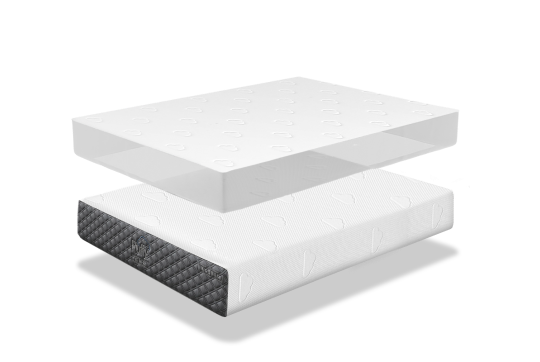Drying your mattress protector correctly is as crucial as washing it properly. Not only does it ensure the longevity of the protector, but it also maintains the hygiene of your sleep environment.
This comprehensive guide aims to provide you with the best practices for drying mattress protectors, incorporating the latest advice and techniques to keep your bedding in top condition.
Can You Dry a Mattress Protector?
Yes, you can dry a mattress protector, but the method you choose is pivotal to preserving its integrity. The drying process varies depending on the material and specific care instructions provided by the manufacturer. It’s essential to follow these guidelines closely to prevent damage to the waterproof and breathable layers.
Can You Wash and Dry a Mattress Protector?
Yes, you can wash and dry a mattress protector, but the method depends on the material and the manufacturer’s instructions. Most mattress protectors are designed to be waterproof and are made from materials that can withstand washing and drying. However, it’s vital to follow the care label to avoid damage. Here’s a general guideline:
- Washing: Use a gentle cycle with cold or warm water and a mild detergent. Avoid bleach or fabric softeners, as they can degrade the waterproofing material.
- Drying: Many mattress protectors can be tumble dried on a low heat setting. It’s important to use a low temperature to prevent shrinking or melting any waterproof layers.
Best Practices for Washing and Drying:
- Pre-treat Stains: Spot clean any stains before washing using a mild detergent or a stain remover suitable for the protector’s fabric.
- Wash Separately: To prevent abrasion and pilling, wash your mattress protector separately from other laundry.
- Gentle Detergents: Choose a mild, liquid detergent over powder to avoid residue on the waterproof layer.
Pairing your Puffy Lux Mattress with a well-cared-for mattress protector ensures the longevity of both products.
How to Dry Mattress Protector
Drying your mattress protector properly is essential to maintain its integrity and effectiveness. Here’s how to do it right:
- Check the Care Label: Always start by checking the manufacturer’s drying instructions to ensure the best care for your protector.
- Remove Promptly: Once the wash cycle is complete, remove your mattress protector from the washing machine promptly to prevent wrinkles and mildew.
- Tumble Dry on Low: If the care label allows, tumble dry your mattress protector on a low heat setting. High heat can damage waterproof barriers.
- Air Dry if Necessary: For protectors that can’t be tumble dried, air drying is a safe alternative. Hang the protector in a well-ventilated area away from direct sunlight, which can degrade the fabric and waterproofing.
- Avoid Ironing: Ironing a mattress protector is generally not recommended, as high heat can damage the waterproof layer.
Tips for Effective Drying:
- Drying Time: Be patient; waterproof materials often take longer to dry.
- Check Dryness: Ensure the protector is completely dry before putting it back on the mattress to prevent mold and mildew growth.
Interested in how Puffy stacks up against other brands? Check out our mattress comparisons: Puffy vs Purple, Puffy vs Nectar, Puffy vs Casper, Puffy vs Leesa, Puffy vs Saatva, Puffy vs DreamCloud, and Puffy vs Tuft and Needle.
Can You Put a Mattress Protector in the Dryer?
Whether you can put a mattress protector in the dryer depends on the specific product and its material. As a general rule:
- Yes, But With Caution: Many mattress protectors are dryer safe but should be dried on a low heat setting. High heat can damage the waterproof layer or cause shrinkage.
- Read the Label: Always refer to the care instructions. Some protectors made from delicate materials may require air drying.
A dry and breathable protector contributes to the overall sleep experience, ensuring your Puffy Lux Mattress delivers uninterrupted sleep night after night.
Check out Puffy mattress reviews from real customers and see how we compare with other brands.
Additional Tips for Drying Mattress Protectors
- Do Not Iron: Applying direct heat can damage the waterproof layer, so avoid ironing the protector.
- Frequent Care: Regularly washing and drying your protector extends its life and effectiveness.
- Spot Clean When Necessary: For small spills or stains, spot cleaning can prevent the need for a full wash, preserving the protector’s condition.
Use our store locator to find the closest furniture or mattress store near you and feel the cloudlike comfort of our Puffy Mattress in person.
Conclusion
Properly drying your mattress protector is essential for maintaining its protective qualities and ensuring your sleeping environment remains clean and comfortable.
Whether you choose to air dry or use a dryer, following the care instructions and tips outlined in this guide will help extend the life of your protector. Remember, a well-maintained mattress protector not only protects your mattress but also enhances your overall sleep quality.

- Oeko-Tex® Standard 100 certified.
- Hypoallergenic.
- Lifetime warranty.
- 101-night sleep trial.
- Free shipping and returns.












